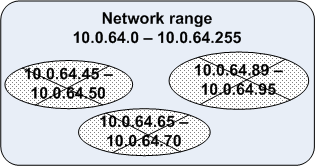Searching the Help
To search for information in the Help, type a word or phrase in the Search box. When you enter a group of words, OR is inferred. You can use Boolean operators to refine your search.
Results returned are case insensitive. However, results ranking takes case into account and assigns higher scores to case matches. Therefore, a search for "cats" followed by a search for "Cats" would return the same number of Help topics, but the order in which the topics are listed would be different.
| Search for | Example | Results |
|---|---|---|
| A single word | cat
|
Topics that contain the word "cat". You will also find its grammatical variations, such as "cats". |
|
A phrase. You can specify that the search results contain a specific phrase. |
"cat food" (quotation marks) |
Topics that contain the literal phrase "cat food" and all its grammatical variations. Without the quotation marks, the query is equivalent to specifying an OR operator, which finds topics with one of the individual words instead of the phrase. |
| Search for | Operator | Example |
|---|---|---|
|
Two or more words in the same topic |
|
|
| Either word in a topic |
|
|
| Topics that do not contain a specific word or phrase |
|
|
| Topics that contain one string and do not contain another | ^ (caret) |
cat ^ mouse
|
| A combination of search types | ( ) parentheses |
|
New/Edit Range Dialog Box
Enables you to set network ranges for Data Flow Probes, a probe clusters, or passive discovery probes. The results are retrieved from the addresses in the range you define. You can also define IP addresses that must be excluded from a range.
| To access |
Select
|
| Important information |
|
| Relevant tasks |
User interface elements are described below:
| UI Element | Description |
|---|---|
| IPv4/6 | Enables you to define the IP range in IPv4 or IPv6 format. |
| Definition Type |
Available: When creating a new range only |
| Range |
Enables you to select a range over which the probe or cluster should perform discovery.
IPv6 ranges are defined in CIDR notation only:
Note IPv6 ranges cannot include IPv4-mapped IPv6 addresses (0.0.0.0 - 255.255.255.255). If your IPv6 range includes IPv4-mapped IPv6 addresses, these addresses must be defined separately in IPv4 ranges. For example,the IPv6 range, 0:0:0:0:0:fffe:0:0/60, must be defined as a number of ranges as follows:
|
| Type |
Defines the IP address lease time setting for the range. Available when: Defining a range for a Data Flow Probe or a probe cluster. Note It is important to select the appropriate IP Address type to ensure that discovery is performed as expected. For more information, see Effects of Range Type on Discovery Workflows.
|
| Description (Optional) |
A description about the selected range. Note
|
| Excluded IP Ranges |
Enables you to define a range of IP addresses to exclude from the full network range specified above. Note
New Excluded IP Range Delete Excluded IP Range Edit Excluded IP Range Example: You can divide a network range into several sub-ranges. For example, if the range is 10.0.64.0 – 10.0.64.255 and you define three excluded ranges:
the Universal Discovery is performed over:
|
| Ports |
Enables you to define ports over which passive discovery should be performed within the defined range:
Available: When defining a network range for a passive discovery probe only. |
We welcome your comments!
To open the configured email client on this computer, open an email window.
Otherwise, copy the information below to a web mail client, and send this email to ovdoc-asm@hpe.com.
Help Topic ID:
Product:
Topic Title:
Feedback:






 or Edit Range
or Edit Range  button.
button. . Deletes an excluded IP range.
. Deletes an excluded IP range.
 to select ports to monitor.
to select ports to monitor.